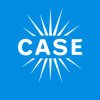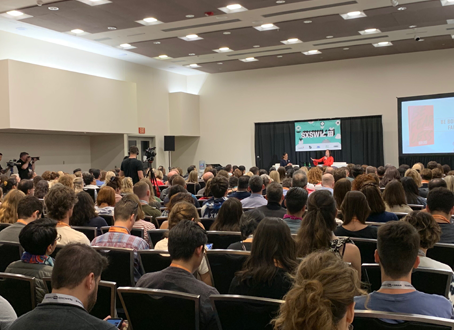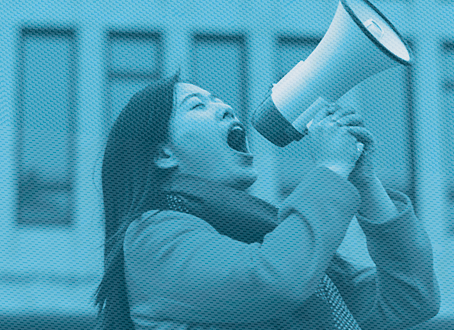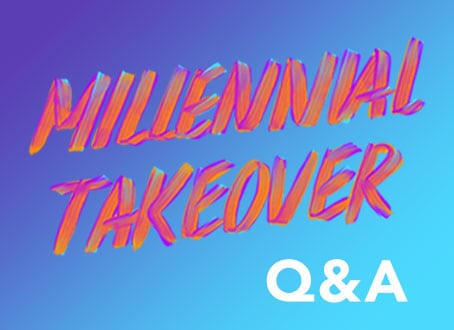As the summer winds down and we gear up for what promises to be an exciting fall at the Case Foundation, I thought it might be useful to step back a bit and reflect on our work – both the wonderful opportunities that we encounter every day as we invest in people and ideas that can change the world, and in the challenges and barriers we face as we work with our extensive network of partners and organizations to do great things.
Together with many of our colleagues in the philanthropy and nonprofit community, the macro shifts that have taken place around us in the past year have caused us to look hard at what we fund and to be vigilant in assuring that our resources are deployed in smart, effective programs that are yielding meaningful outcomes. And, despite the worst economic downturn in recent history and major transitions taking place in the public sector, we are pleased about the progress of the initiatives we’ve supported and enthusiastic about the new opportunities ahead.
One example for instance, we launched a civic engagement campaign in January to coincide with the inauguration of President Obama. The campaign, entitled “Change Begins with Me,” called on citizens to make commitments to “be the change” through small or very significant personal acts – anything from shoveling snow for a neighbor to tackling bigger issues at the community or even global level. Last week, we announced that a sampling of participants suggests more than 90% of those that made commitments said they’ve already fulfilled them. The number exceeds where we thought we would be with the campaign at mid-year, so we feel very good about those efforts.
But at the same time, on a larger spectrum, the Civic Health Index, released just last month by the National Conference on Citizenship, reports that volunteerism and acts of civic engagement are down in the nation overall, with the economy cited as the #1 dynamic influencing citizen efforts on these fronts. We’ve put significant Case Foundation efforts and resources toward civic engagement and volunteerism in recent years, and so the report reminds us that we still have a long way to go to achieve the kind of active civic engagement our nation and communities need and deserve.
Our main area of investment in health care has been in the brain cancer arena, through Accelerate Brain Cancer Cure (ABC2), an organization that was launched with an innovative approach toward accelerating therapies for brain cancer patients. The organization was created to be a collaborative that brings together scientists, doctors, pharmaceutical companies, universities and other nonprofits. When we launched in 2002, we knew it would be a longer versus shorter haul toward desired outcomes. For many years and through many millions of dollars of investment, we have worked with the scientific and medical communities toward the goal of new therapies for patients. We had a sense of slow momentum as we aimed our focus at the screening of compounds and increasing the number of clinical trials and scientific convenings that we hoped would advance the field and result in new therapies being approved for patients. Admittedly, as the years ticked by, there were periods when we questioned if our investments were paying off or producing outcomes at a fast enough pace. Then 2009 arrived, and it has proven to be a remarkable year. For the first time in over a decade, the FDA approved a new drug, Avastin, for recurrent brain tumor patients. ABC2 helped to fund the early screening of this drug in partnership with Genentech, Duke University and others that ultimately cleared the way for clinical trials and approvals.
In addition, in the late spring, American Idol’s David Cook served as honorary chair of the Race for Hope, the primary fundraising event for ABC2, in partnership with the National Brain Tumor Society. This year the event raised more than $2 million. Shortly after the race, David appeared on American Idol’s finale and donated his iTunes revenues from the recording to ABC2. Needless to say, the momentum and progress is very real for our investments in brain cancer and we look forward to even more developments in the months ahead.
Our support of health and humanitarian efforts in Africa has resulted in a portfolio of diverse efforts that span much of the continent. Investments in HIV/AIDS, malaria, clean water and efforts aimed at reducing extreme poverty, have opened our eyes and taught us much about challenges and opportunities of working in Africa. And they’ve taught us that each country, and indeed each village, in Africa brings its own unique characteristics, making a “one size fits all” solution to entrenched problems unrealistic and posing significant barriers to scale.
One example is PlayPumps, the initiative launched to bring clean water to African villages via children’s merry-go-round pumps. We’re proud of the investment we’ve made in PlayPumps International U.S., the fundraising and marketing arm for the initiative, and the strides they’ve made in helping to bring clean water to millions of people. However, after three years of working on the ground in Africa, PlayPumps has identified significant concerns related to maintenance of the pumps in certain areas. While the initiative has brought hundreds of new pumps to Africa – an outcome we celebrate – at the same time some mix of the scale and reach, combined with a downturn in the economy, has meant that local contractors can’t keep pace with the maintenance needs. It is becoming clear that the kind of scale we hoped for will not likely be achievable in the timeframes initially outlined. As a result, Gary Edson, a strong leader with both development and business expertise, was brought on board as CEO of PlayPumps International to help the organization take a hard look at the right ways to go forward with humanitarian efforts in the future and how to best take and apply lessons learned from our involvement to date.
As I write this, we are poised to launch our next America’s Giving Challenge (AGC) in the coming weeks. We are deeply in the throes of the advance work, helping nonprofits gear up and get trained to take full advantage of what we hope will be many thousands of individuals coming online to support causes they care about – and to pick up new skills to engage new donors and supporters in the future. When we introduced the first America’s Giving Challenge in late 2007, our desired outcomes were not just about getting individuals to give to causes they cared about through this new technology, but also to galvanize nonprofit organizations to get up to speed and develop expertise in this exciting, new marketing and outreach front.
That Challenge motivated more than 70,000 Americans to give to causes they cared about and helped prepare many thousands in the nonprofit sector for social network marketing and outreach. But we realize that as we take this year’s Challenge forward, we do so in an economy in which resources are constrained – both for individuals and for organizations. What will this mean to the outcomes for this year’s campaign? Will fewer people give? Will nonprofits have the resources to fully leverage this opportunity for their organizations? These are questions we’ve asked ourselves time and time again, and at times we’ve worried that this year’s Challenge may not raise as much money or recruit as many donors as the first. But the bottom line is that we know there is a greater need in our communities, our nation and around the globe than ever before. We’re willing – and excited – to go forward with this investment with the faith that people will support the organizations that support them and that nonprofits will be ready to take advantage of the moment.
We say that the Case Foundation “invests in people and ideas that can change the world.” If we had a crystal ball, we’d invest in people and ideas that WILL change the world but the bottom line is sometimes we can’t know for sure until we try. We’re committed to learning from our successes and challenges and to work collaboratively with others to share and learn along the way.
Yours in service,
Jean Case





